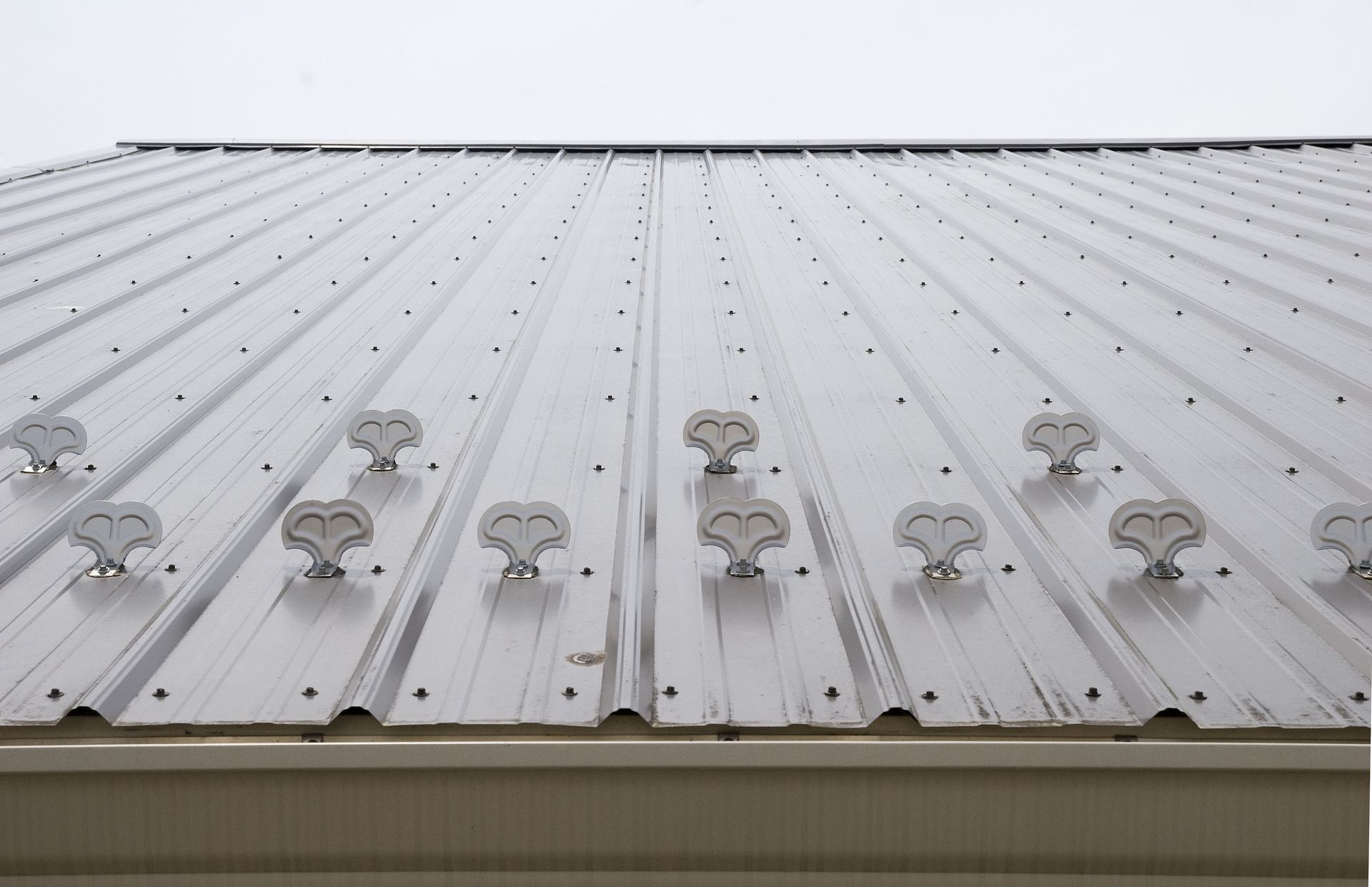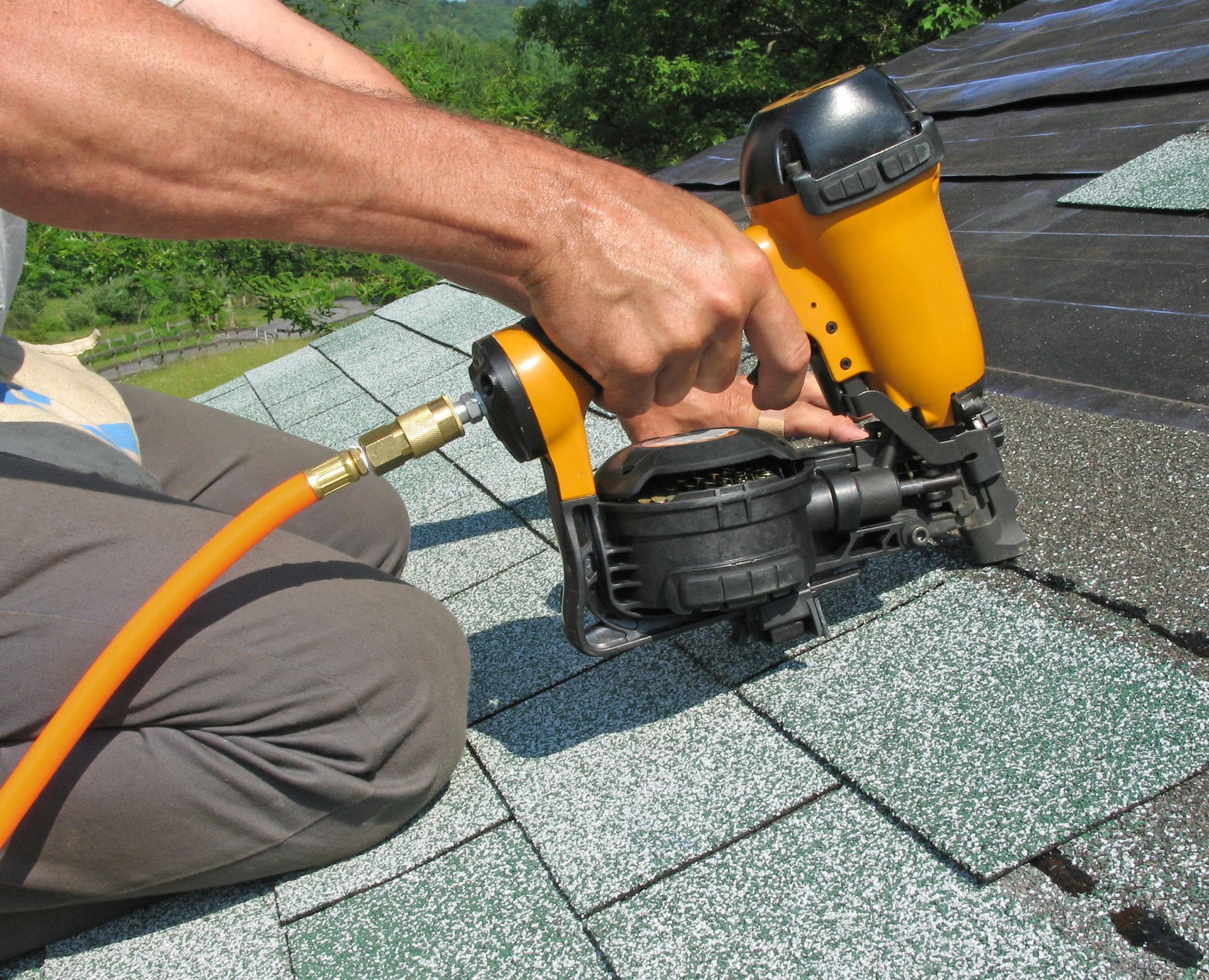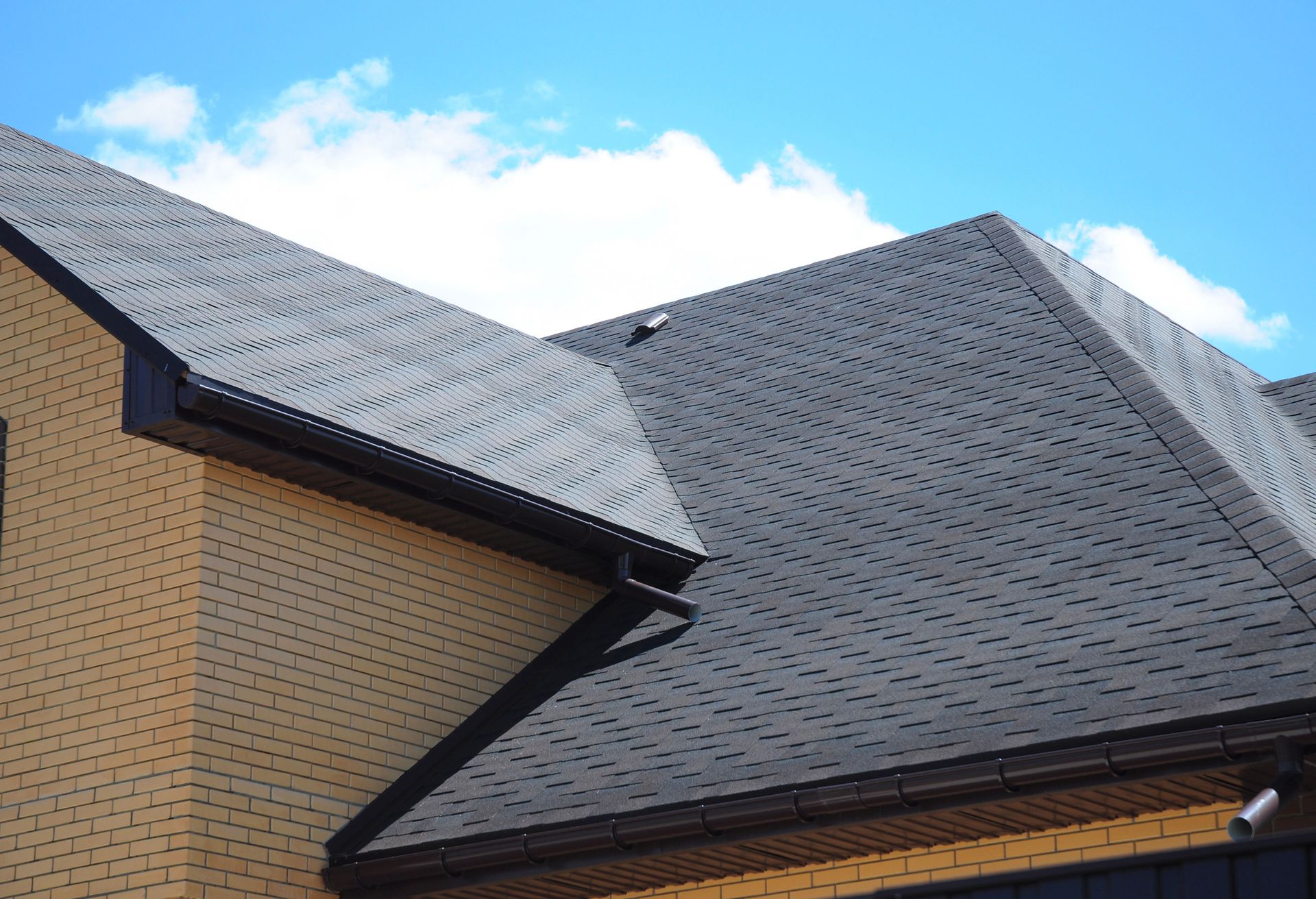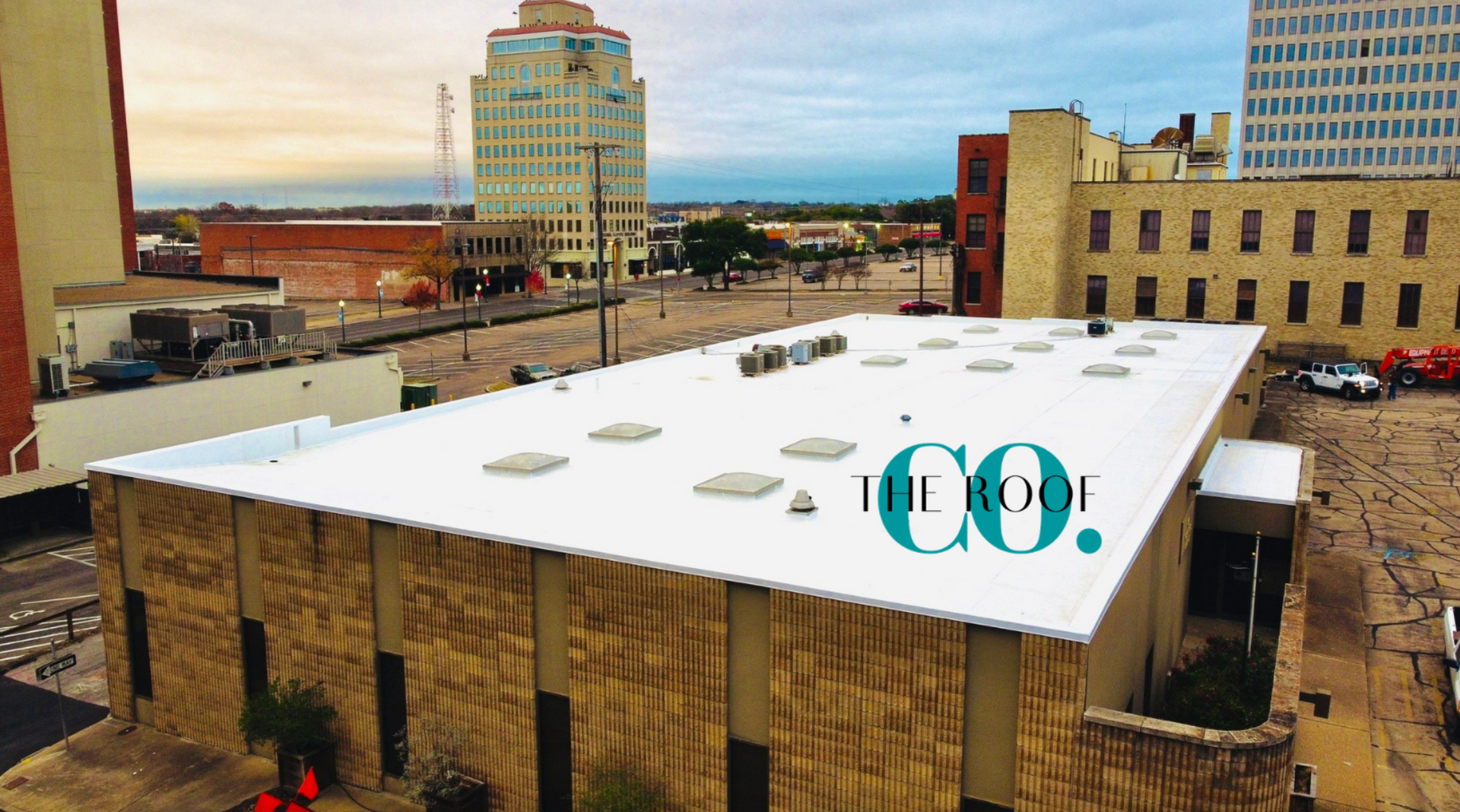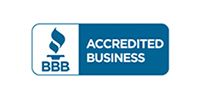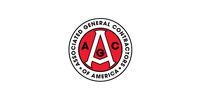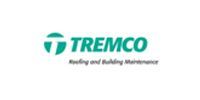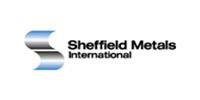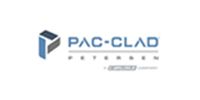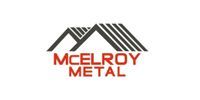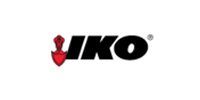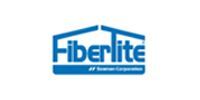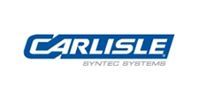Blog
The Roof Co.
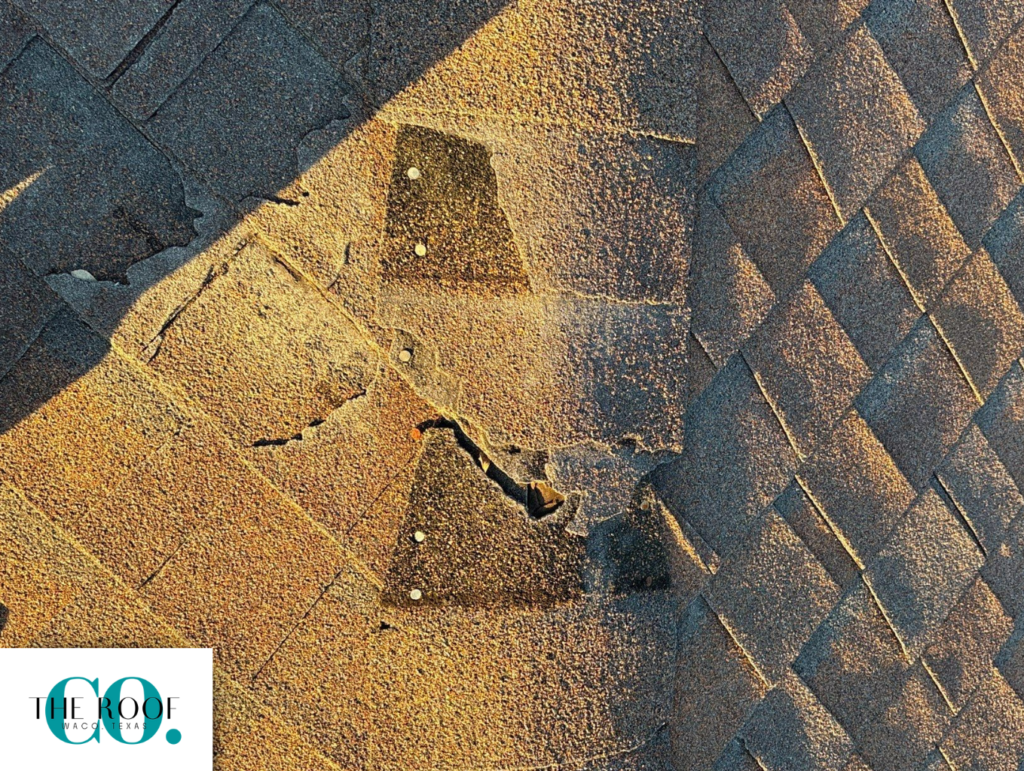
By roofcodev
•
March 1, 2025
The roof over your head is your home’s first line of defense against the elements. However, it is constantly exposed to the forces of nature, and over time, different weather conditions can compromise its integrity. Whether it’s hail, high winds, snow, or intense heat, each type of weather creates unique challenges that can lead to […]
The post How Weather Impacts the Need for Residential Roof Repair Services appeared first on The Roof Co Waco.
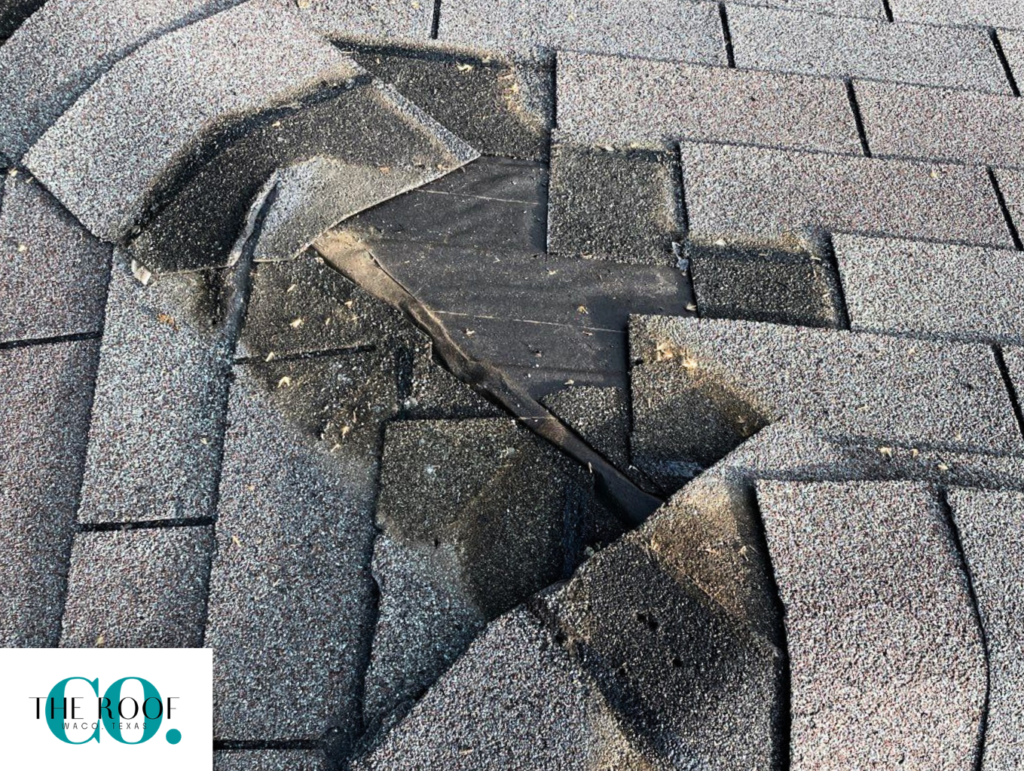
By roofcodev
•
March 1, 2025
Your roof is one of the most vital parts of your home. It shields you and your family from the elements, contributes to your home’s overall aesthetics, and ensures the structure’s integrity. When it’s time to address roof damage, hiring the right residential roof repair services is crucial to maintaining your home’s value and safety. […]
The post How to Choose the Right Residential Roof Repair Services: A Homeowner’s Guide appeared first on The Roof Co Waco.
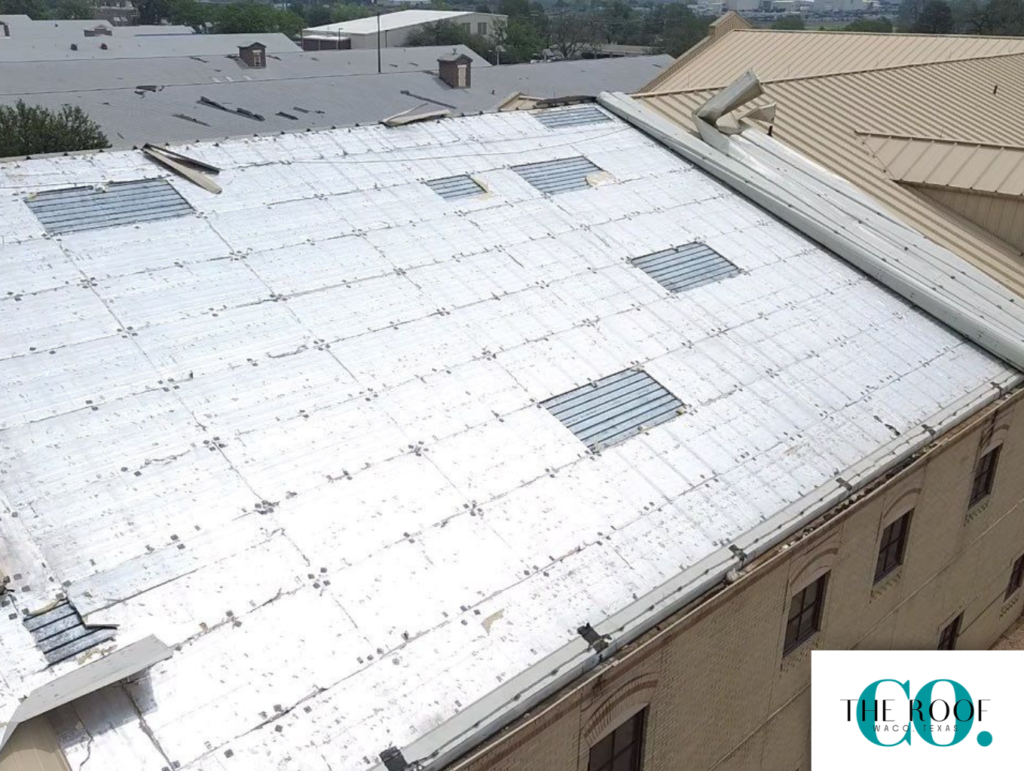
By roofcodev
•
February 10, 2025
Storms can wreak havoc on your property, leaving behind a trail of destruction that often includes damaged roofs, siding, windows, and more. For property owners, the aftermath can feel overwhelming, especially when faced with the financial burden of repairs. Understanding the costs associated with storm damage is a critical step in navigating this challenging process. […]
The post What Does Storm Damage Restoration Cost? A Breakdown of Expenses appeared first on The Roof Co Waco.
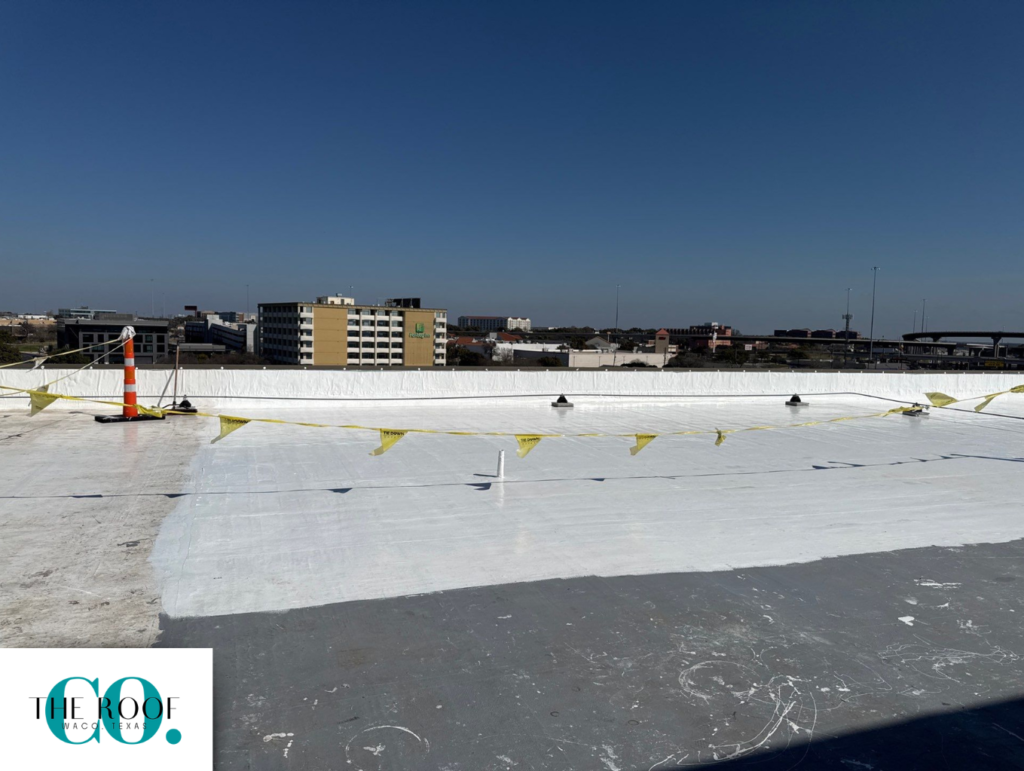
By roofcodev
•
February 10, 2025
A well-maintained roof is more than just a protective barrier —it’s a vital component of your property’s overall integrity and value. It shields you from harsh weather conditions, enhances energy efficiency. However, roofs are subject to wear and tear over time. From minor leaks to more serious structural issues, these problems can worsen if left […]
The post Common Roof Issues That Roof Restoration Can Fix appeared first on The Roof Co Waco.

By roofcodev
•
January 2, 2025
When it comes to a residential roof installation, selecting the right contractor is one of the most critical decisions you’ll make. A roof is your home’s primary defense against the elements, and its quality depends heavily on the expertise and integrity of the contractor you hire. With so many roofing companies to choose from, how […]
The post How to Choose the Right Contractor for Your Residential Roof Installation appeared first on The Roof Co Waco.
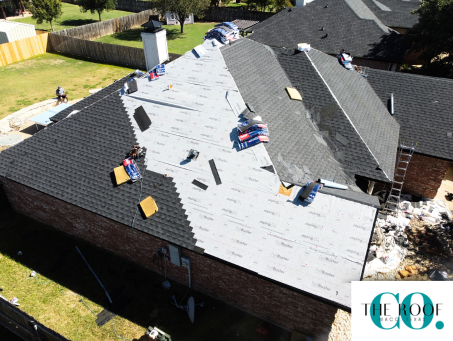
By roofcodev
•
January 2, 2025
When it comes to protecting your home, a sturdy roof is your primary defense against nature’s elements. Residential roof installation is a significant investment, but it’s also an essential one, ensuring your property’s safety, enhancing its curb appeal, and contributing to long-term energy efficiency. Whether you’re replacing an outdated roof or building a new home, […]
The post The Ultimate Guide to Residential Roof Installation: What Homeowners Need to Know appeared first on The Roof Co Waco.

By Black Label
•
November 11, 2024
When it comes to roof replacements or repairs, one term you’ll often hear is roofing square. While it’s a common phrase among roofers, many homeowners are unfamiliar with it until they’re deep into the planning process for their roofing project. At Roof Co, we believe that understanding the concept of a roofing square is essential […]
The post Understanding Roofing Squares: How to Measure and Why It Matters for Your Roof appeared first on The Roof Co Waco.
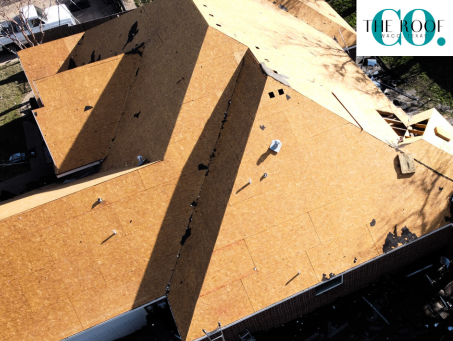
By Black Label
•
November 11, 2024
When you think of a roof, your mind likely pictures the shingles or tiles that cover your home. However, what’s hidden beneath those materials is just as important. The unsung hero of your roofing system is roof sheathing—a crucial structural layer that provides stability and support to your roof. In this article, Roof Co, your […]
The post Roof Sheathing: The Essential Guide for Homeowners appeared first on The Roof Co Waco.
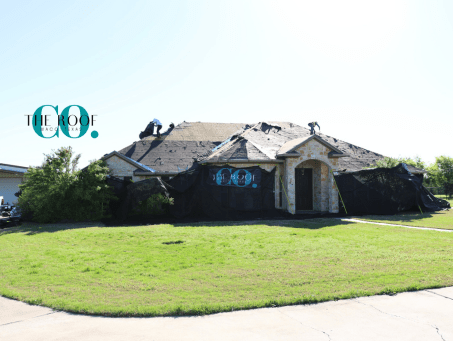
By Black Label
•
November 6, 2024
Incorporating natural light into your home can completely transform its atmosphere, turning dark, enclosed spaces into bright, inviting areas. Not only does natural light make your home feel more welcoming, but it can also boost your mood, improve energy efficiency, and reduce the need for artificial lighting. One of the most effective ways to flood […]
The post Sun Tunnel vs. Skylight: Choosing the Best Lighting Solution for Your Home appeared first on The Roof Co Waco.
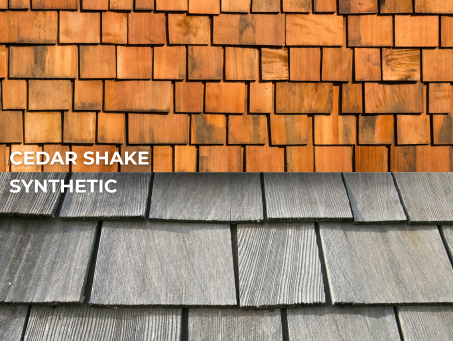
By Black Label
•
November 6, 2024
When it comes to roofing, few materials can match the timeless appeal and rugged beauty of cedar shakes. Known for their rustic charm and natural elegance, cedar shakes have long been a popular choice for homeowners seeking to enhance their property’s aesthetic while benefiting from a high-performance roofing solution. But in today’s world of advanced […]
The post Natural vs. Synthetic Cedar Shakes: Your Complete Guide to Choosing the Perfect Roofing Solution appeared first on The Roof Co Waco.
November 1, 2024
An Introduction to Roof Maintenance: Keeping Your Roof in Top Condition A well-maintained roof is more than just an overhead structure—it’s your property’s first line of defense against the elements. Proper roof maintenance ensures that your investment remains intact and your building remains safe, dry, and comfortable. In this guide, we’ll walk you through a comprehensive approach to roof maintenance and management. Whether you’re a property owner or manager, this blog will provide actionable insights and guidelines to keep your roof in optimal condition. But first, a quick disclaimer. We will never recommend you or anyone who’s not a professional roof contractor to climb and inspect your roof on your own. Doing so will not only put your safety at risk, but it’s inefficient too. There are roof issues that are not immediately apparent to the untrained eye. With that out of the way, let’s get started. 1. The Importance of Roof Maintenance Let’s start by discussing the importance of roof maintenance. After all, roof maintenance isn’t just about fixing problems when they arise. It’s about taking a proactive stance to safeguard your property and achieve the following benefits. It protects your investments. Just as you wouldn’t neglect routine maintenance on other valuable investments, taking care of your roof preserves its longevity and protects the value of your property, preventing small problems from eroding your investment over time. It prevents further costs and damages. Having regular roof inspections performed allows you to catch potential issues early, such as small cracks, loose flashing, or clogged drains. Addressing these promptly not only extends the lifespan of your roof but also maintains the overall structural integrity of your property. It mitigates the risk of water damage. Water damage is particularly problematic because it may lead to problems like mold growth that compromises the structural integrity of your property and even puts the health of its residents at risk! Fortunately, getting regular roof inspections can help identify these issues early, preventing water from seeping in and causing widespread damage. It can give you some peace of mind. From knowing that you’re safe from the potential health risks posed by mold growth up to the hazards posed by the compromised structural integrity of a property, prioritizing roof maintenance can definitely help you sleep better at night. In addition, getting to know potential issues early allows you to manage your budget with greater predictability. 2. Roof Maintenance Guidelines: Key Steps to Follow Even reliable roofing systems require specific maintenance practices to maintain their integrity. Here are some essential guidelines: i. Start a Program of Regular Inspections Conduct inspections at least twice a year, typically in the spring and fall. Ensure inspections cover all types of flashing, adjoining masonry, metal components, and other potential leak sources. Pro Tip: Look for small cracks or blisters—these are often early signs of more significant issues. ii. Plan and Allocate Resources Allocate funds in advance to meet preventative maintenance needs. We also recommend avoiding “quick fixes”. We understand how tempting they can be, especially when they arise from poor planning or unplanned roof damage. That said, inadequate measures are not only risky but can also lead to more costly repairs later. Pro Tip: Set aside a contingency budget specifically for unexpected roofing issues. iii. Understand Your Warranty Familiarize yourself with the terms of your current warranty or guarantee. Don’t forget to consider the cost of systematic preventative maintenance versus the expense of a full roof replacement. Pro Tip: Regular maintenance might be required to keep your warranty valid, so ensure compliance with all terms to keep your property protected. iv. Immediate Repairs Are Crucial Learn to identify the red flags of a developing roofing issue. Immediately repair any ruptures, splits, holes, or other membrane deficiencies. And in case you need to apply a temporary repair, just make sure to follow it through with a permanent fix as soon as possible to prevent further damage. Pro tip: Keep a list of trusted contractors on hand to ensure quick and effective responses when repairs are needed. Or better yet, keep our number handy. It’s 254-651-1776. Please feel free to contact us anytime. v. Know Your Roof System Be sure you know the make of your current roof system and the susceptibility of its underlayment or insulation to moisture damage. Unfortunately, deteriorated felts or membranes can’t always be rejuvenated. In addition, you need to make sure that the manufacturer of your roof systems endorses the materials you use. Pro Tip: Consult with one of our roof experts. They’re accredited and experienced to provide you with accurate and detailed info on your needs, helping you make a more informed decision when considering repair and replacement options. 3. Do’s and Don’ts of Roof Maintenance Maintaining a roof involves knowing what to do and what to avoid. Here’s a quick guide to help you navigate the process: Do: Train your maintenance team. A well-trained maintenance team is your first line of defense in preserving your roof’s integrity. There should be at least someone in your property who knows what to look for and how to provide temporary solutions for your roof system. This ensures that minor issues can be identified and addressed before they escalate. What we highly recommend, though, is for you to get the services of a professional roofing contractor like us to create a custom maintenance program tailored to your specific roof. This is still the best approach for ensuring comprehensive care. Implement a maintenance program. A preventative maintenance program will extend your roof’s longevity regardless of its material or design. Ideally, you should get professional roof inspections done no less than twice a year, in the spring and fall. Don’t forget your property’s exterior. Your roof is just one component of your property’s protective shell, so exterior inspections are equally important. Cracks in masonry walls may signal potential cracks in your roofing or flashing. Loose or leaky perimeter edge metal flashing can compromise your roof’s defense against wind storms, leading to possible blow-offs. Clogged roof drains, downspouts, and gutters can potentially lead to water damage. Communicate with your equipment service personnel. Service personnel working on rooftop equipment can inadvertently damage your roof. Proper communication and protocols can help prevent unnecessary issues in the future. You can start by informing them about the specifics of your roof system, and by warning them against penetrating or dropping tools and equipment onto the roof membrane. Encourage them to report any incidents immediately as well. This way, they can be addressed before they cause more damage. Keep the roof clean. A clean roof is a healthy roof. Regularly have debris removed from your roof to prevent clogged drains and water accumulation. Leaves, branches, and other materials can trap moisture and cause deterioration. Monitor roof wear and tear. Keeping an eye on the physical condition of your roof can help catch issues early. Exposed felt of fabric can lead to the fast deterioration of your roofing material, so stay vigilant against open laps, blisters, excessive wrinkling, or ridging. These are all signs of potential roof failure. Focus on flashing and sealants. Flashing, exposed sealants, and other penetrations are critical to preventing leaks. Give these areas particular attention during inspections to ensure they remain sealed and secure. Don’t: Allow unqualified people to maintain your roof. Our roof experts are fully equipped to handle roof inspections, repairs, or maintenance tasks. Keep in mind that inexperienced hands can cause more harm than good, potentially leading to more costly damages. Allow unsupervised traffic on your roof. Careless movement on your roof can lead to damage, and thus, should never be allowed. This can put people at risk anyway. Allow unsupervised penetrations by equipment service personnel. These can be risky if not properly managed. Instead, ensure that any penetration will be immediately and properly flashed by a qualified roof contractor, like us. Don’t forget to notify your roofing manufacturer before any roof alterations to avoid voiding your warranty. Permit the use of inferior products. Quality materials are crucial for effective maintenance and repairs. Poor quality materials will not only compromise the durability and performance of your roof but can also lead to premature failures and more frequent repairs. Fail for “quick solutions”. Quick fixes are often too good to be true, so beware of products claiming to be a one-size-fits-all solution for your roof issues. They might cause more harm than good, especially if they’re not enough to address underlying issues properly. Solely rely on a manufacturer’s warranty. A warranty isn’t a substitute for regular maintenance. They can often exclude many of the issues that can develop on a roof, such as those caused by poor maintenance, improper installation, and/or environmental factors. Deal with unreliable contractors. The credibility of your roofing contractor is as important as the materials they use. To put your mind at ease, check out our About page to get to know us better. Finally, keep in mind that the cheaper option isn’t always the most cost-efficient in the long run. For instance, pay attention to “Change Orders”. They can significantly impact the final cost of a project. 4. Professional Consultation: When to Call in the Experts While some aspects of roof maintenance can be handled by trained maintenance personnel, there are times when it’s best to consult with a professional roofing contractor. Here are a few scenarios where professional help is recommended: Complex repairs. If the roof has extensive damage or deterioration, a professional can provide the necessary expertise to address the issue effectively. New equipment installations. When installing new equipment that penetrates the roof, it’s crucial to ensure that the penetrations are properly flashed by a qualified contractor. Warranty work. If your roof is under warranty, certain repairs may need to be performed or approved by the manufacturer to maintain the warranty coverage. 5. The Value of Preventative Maintenance Investing in regular roof maintenance is not just about preventing leaks or prolonging the life of your roof—it’s about protecting your entire building. By following the guidelines outlined in this blog, you can ensure that your roof remains in top condition, providing safety and security for years to come. Remember, a well-maintained roof is a testament to good building management. Don’t wait for problems to arise—start your roof maintenance program today!
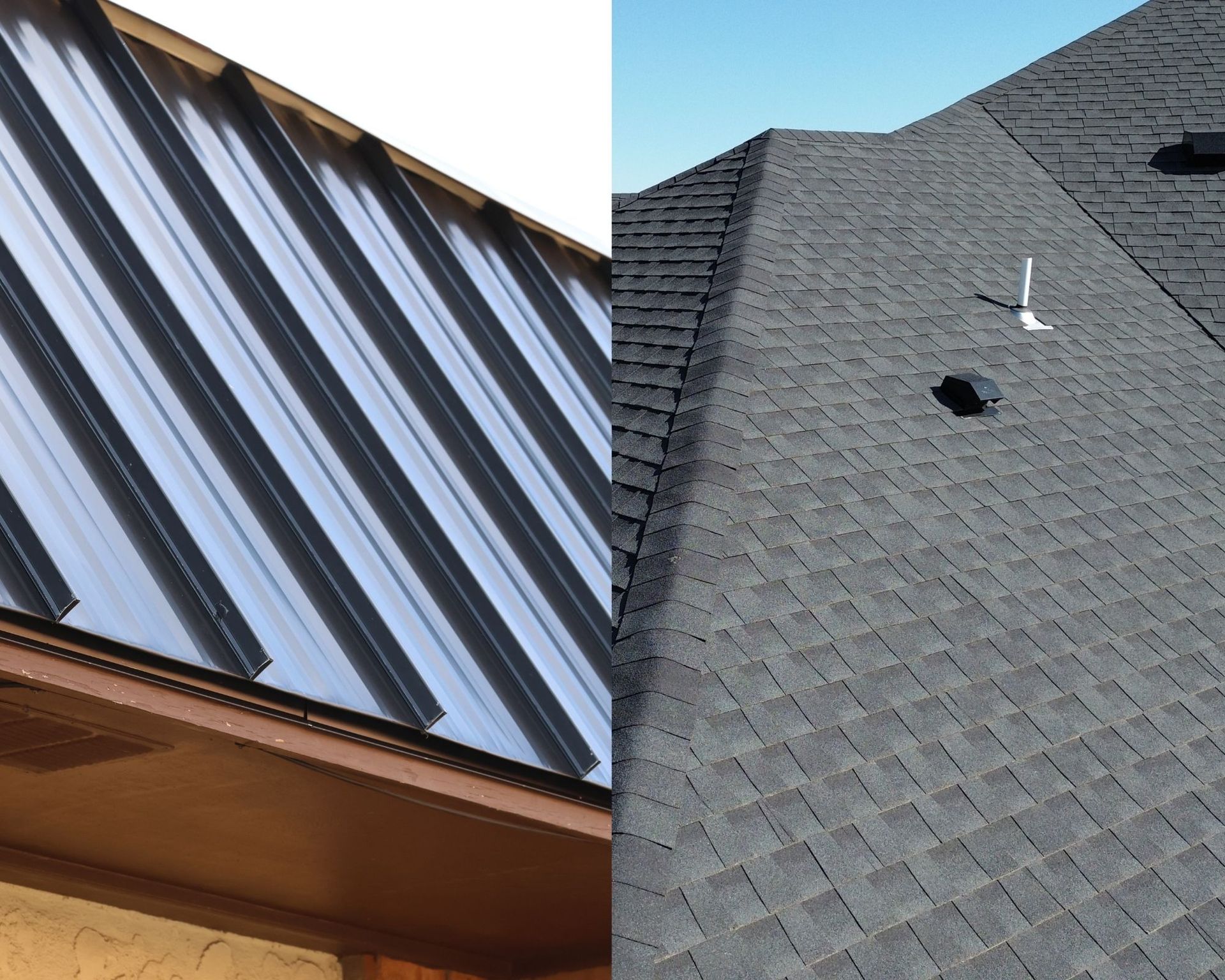
October 21, 2024
Are you in the process of deciding between a metal roof and asphalt shingles for your upcoming roof replacement? If your decision hinges on comparing the costs of metal roofing to asphalt shingles, you’re certainly not alone. This choice can be daunting, especially given the abundance of misleading information in the roofing industry. Many sources tend to focus solely on material costs, neglecting to provide a comprehensive breakdown that includes important factors such as installation, maintenance, and long-term savings. This leaves homeowners to navigate the complexities of roofing expenses without adequate guidance. At Roof Co Waco, we understand that transparency is crucial for building trust and making informed decisions. With our extensive experience in the roofing industry, we are committed to offering you a thorough comparison of metal roof costs versus asphalt shingles. By the end of this article, you’ll have a clear understanding of the expenses associated with each roofing option, including the rationale behind the generally higher price of metal roofing. We will also delve into the key factors that influence the overall costs, equipping you with the information you need to make a confident and informed choice for your home. Your roof is an investment, and we’re here to ensure you understand every aspect of that investment. 1. Understanding the Costs of Metal Roofs and Asphalt Shingles As of 2024, the costs of metal roofs are typically higher than those of asphalt shingles, with the price difference varying based on the specific types of asphalt shingles and metal roofing you select. Below, we’ll break down the costs for both materials based on the types available on the market. i. How Much Do Asphalt Shingles Cost? Asphalt shingles come in three primary types, each varying in cost and quality: 3-Tab Asphalt Shingles . This is the most basic and cost-effective type of shingle, averaging about $4.00 per square foot for installation. Although it offers an economical choice, it is the least durable and has a shorter lifespan compared to other options. Architectural Asphalt Shingles . These shingles provide greater durability and enhanced protection compared to 3-tab shingles. Typically priced between $5.00 and $6.00 per square foot, they are the most popular choice among homeowners seeking a balance of quality and affordability. Luxury Asphalt Shingles . If you’re looking for a premium roofing solution, luxury shingles offer outstanding durability and stunning aesthetics. Prices for luxury asphalt shingles typically start at around $8.00 per square foot and can increase based on brand and quality. ii. How Much Does a Metal Roof Cost? When it comes to metal roofing, the cost varies significantly based on the type of metal and the roofing system you choose. Here’s a breakdown: Exposed Fastener Metal Roof . This type of metal roofing system, also known as an exposed fastener, is one of the more affordable options. The cost ranges between $4.50 and $6.50 per square foot. However, these roofs require ongoing maintenance, such as replacing fasteners over time, which can add to the overall cost of the metal roof . Standing Seam Metal Roof . A standing seam metal roof, featuring a hidden fastener system, delivers exceptional durability and longevity. Pricing typically ranges from $12.00 to $16.00 per square foot. If you opt for a premium metal, such as copper, expect costs to rise significantly, ranging from $20.00 to $50.00 per square foot. As you can see, metal roofing prices can vary dramatically based on the material and installation type. Although metal roofs cost more upfront, they offer significant long-term savings through durability and energy efficiency. 2. What Makes Metal Roofs More Expensive Than Asphalt Shingles? The primary reason a metal roof cost is higher than asphalt shingles lies in the price of materials and labor. Let’s dive deeper into these factors. Material Costs One of the biggest reasons why metal roofing is more expensive is the material itself. Whether you choose steel, aluminum, or copper, metal panels cost more than asphalt shingles. Additionally, the components needed for a metal roofing system, such as fasteners, flashing, and underlayment, are typically more expensive than those used in asphalt roofing. Labor Costs Installing a metal roof requires more specialized skills and labor compared to asphalt shingles. Roofers need to be trained in handling and installing metal panels, which is more complex than installing shingles. Additionally, the process of installing a standing seam metal roof takes longer, increasing labor costs. 3. Factors Influencing the Cost of Metal Roofs and Asphalt Shingles Beyond material and labor costs, several other factors can affect the overall cost of your roof replacement. Whether you choose metal roofing shingles or asphalt shingles, your roof’s complexity, accessibility, and size all play a role. 1. Roof Square Footage The size of your roof is one of the most significant factors in determining the cost of your new roof. A larger roof requires more materials and labor, which naturally increases the price. However, it’s important to note that your home’s square footage doesn’t always equal your roof’s square footage. Your roofer will measure your roof to get an accurate estimate of the total area that needs to be covered. 2. Roof Accessibility Roof accessibility is a key factor influencing labor costs during a roof replacement. If your roof is challenging to reach—due to landscaping, fencing, or the placement of materials and equipment—it can significantly extend the time and effort required to complete the project. More obstacles present, means higher labor costs. 3. Number of Roof Penetrations Roof penetrations include anything that protrudes from your roof, such as chimneys, skylights, plumbing vents, and kitchen/bathroom vents. Each penetration adds complexity to the installation process, as roofers need to properly flash around each to prevent leaks. More penetrations mean more labor and materials, which can increase the cost. 4. Roof Pitch The pitch or slope of your roof is another crucial factor that can impact installation costs. Steeper roofs pose greater challenges for workers and necessitate additional safety measures, such as harnesses and tie-offs. These factors contribute to increased labor and time expenses. Consequently, if your roof has a high pitch, you can expect replacement costs to be higher. 5. Roof Complexity The design of your roof also impacts the cost of your roof replacement. A simple, straightforward roof with only a few facets is less expensive to replace than a complex roof with multiple angles, valleys, and penetrations. For instance, a ranch-style roof with two or four facets will be much more affordable than a roof with numerous facets, a steep pitch, and multiple chimneys or skylights. 4. Is a Metal Roof Worth the Investment? While a metal roof cost comes with a higher upfront cost compared to asphalt shingles, it offers several advantages that make it worth considering for many homeowners. 1. Durability and Longevity A metal roof can last 40–70 years, depending on the material, while asphalt shingles typically last 15–30 years. This means you’ll likely replace an asphalt roof two or three times before you’d need to replace a metal roof, making metal roofing a cost-effective choice in the long run. 2. Energy Efficiency Metal roofs are highly reflective, meaning they can help reduce energy costs by keeping your home cooler in the summer. In contrast, asphalt shingles often absorb heat, potentially resulting in increased cooling expenses. 3. Environmental Impact Metal roofing is often made from recycled materials and is 100% recyclable at the end of its lifespan. Asphalt shingles, while sometimes recyclable, are more likely to end up in landfills, contributing to environmental waste. 4. Low Maintenance While metal roofs require some maintenance, such as occasional fastener replacement (for exposed fastener systems), they generally require less maintenance than asphalt shingles, which are more prone to damage from weather and debris. 5. To Sum up In 2024, the landscape of roofing choices continues to evolve, with the cost of metal roofing typically exceeding that of traditional asphalt shingles. However, it’s important to view this investment in a broader context, as the long-term benefits of metal roofs often outweigh their initial expense. Known for their exceptional durability, metal roofs can last 50 years or more with proper maintenance, significantly outpacing the lifespan of asphalt shingles, which typically require replacement every 15 to 30 years. This longevity means that over time, metal roofing can save homeowners not just on replacement costs but also on maintenance and repairs. Additionally, metal roofs are celebrated for their energy efficiency. They reflect solar heat, which can lead to lower cooling costs during the hot summer months, helping you save on energy bills. This efficiency, combined with their resistance to mold, rot, and insect damage, results in minimal maintenance requirements. Homeowners often find that the long-term savings in energy costs and reduced maintenance can make metal roofs a more economical choice in the long run. When deciding between a metal shingle roof and asphalt shingles, it’s essential to consider the full spectrum of costs and the various factors that influence them. These include not only the initial purchase price but also installation costs, potential energy savings, and the frequency and cost of maintenance. At Roof Co Waco, we understand that this decision can feel overwhelming, which is why our dedicated team is here to provide guidance every step of the way.
October 21, 2024
Take a moment to think of your roof as the unsung hero of your property. It’s always there, always reliable, but unfortunately, also often overlooked. While your roof might not always demand your attention, just because it’s not leaking doesn’t mean that it’s not aching somewhere. To help you out, we’ve compiled a list of our top 12 tips on roof maintenance. By keeping these in mind, we’re confident that you’ll be able to ensure your roof stays in tip-top condition. But first, a quick disclaimer. We will never recommend you or anyone who’s not a professional roof contractor to climb and inspect your roof on your own. Doing so will not only put your safety at risk, but it’s inefficient too. There are roof issues that are not immediately apparent to the untrained eye. With that out of the way, let’s get started. 1. Top 8 Roof Maintenance Tips Determine the state of your roof. When we say “roof maintenance”, what we mean is the proactive process of keeping your roof in good shape. The goal is to address minor issues immediately before they escalate into more significant problems. That said, there is no point in maintenance if your roof is in a bad condition already. This is the reason why we highly recommend getting your roof professionally inspected twice a year, ideally once in the fall and once in the spring. Other instances that we recommend getting your roof checked are after a major weather event or upon spotting any early signs of damage that you feel might require immediate attention. Again, we will be remiss if we don’t reiterate that we are not recommending you perform these checks yourself. Never climb on top of your roof since it will put your safety at risk. Don’t rely solely on your warranty. While a roofing warranty is a great safety net, it’s not a substitute for regular roof maintenance. Many roofing warranties come with a catch–they require you to perform annual or bi-annual roof inspections to keep the warranty valid. These inspections are crucial for catching potential problems early, such as storm damage, clogged drains or gutters, or damage caused by service personnel on your property’s roof. Pro Tip: The best people to perform these inspections are roofing experts (like RoofCo) or any of your roofing manufacturer’s authorized contractors. By setting up a maintenance service agreement for bi-annual inspections, you ensure that your roof gets the close attention it needs. Our roof experts here at RoofCo know exactly what to look for and can provide immediate corrective action, keeping your warranty intact and your roof in top condition. Prepare for severe weather before it strikes. When the weather forecast predicts impending weather events such as heavy rain, high winds, and freezing conditions, we naturally brace ourselves for the worst. But the real question is, is the roof above your head ready too? Severe weather can expose problems that were previously unnoticed, with one of the most common being gaps in the system that allow water to enter. While the roof is often the first to be blamed, the roofing membrane may not be the actual culprit. During severe weather, water entry is more likely to occur through other vulnerable points, such as: Rusted out HVAC units Cracked brick or block walls Nothing beats prevention. As such, we highly recommend regular inspections of the walls extending above your roof’s flashings as well as the close monitoring of any rooftop mechanical equipment. By addressing these potential weak spots before a storm hits, you can significantly reduce the risk of water intrusion and keep your building safe and dry. Get your maintenance team up to date. Building maintenance personnel often receive training on a specific roof system or attend a basic course that doesn’t really cover the diverse range of systems out there. As a result, key aspects of roof maintenance and inspections are frequently overlooked. Fortunately, there are local opportunities to get updated local roof maintenance training sessions. These are usually sponsored by the Roofing Contractors Association or the Roof Consultants Institute (RCI). Be extra proactive during severe winter weather. Severe winter weather can be particularly hard on properties. They often lead to roof drains freezing over several inches of ice. The problem is that as the snow melts, this trapped water has nowhere to go, creating a host of problems. Before you grab any tool to try and break the ice yourself, we highly recommend consulting a professional as the temperatures start dropping. Our roof experts are fully equipped to examine whether your roof drains are prone to freezing and recommend preventative measures. Know who to contact for roofing emergencies. We understand how easy it is to overlook important details in a time of crisis. For instance, it is not uncommon for property owners to forget to review their roof’s warranty right after a natural disaster or a roofing failure. Another common mistake is failing to report the issue to the roof manufacturer. The problem is that failing to follow these procedures could lead to issues when you require future services covered by the warranty. As such, we recommend having a plan ready for such events. This way, you’ll have a guide that will walk you through what to do and who to contact following a roofing issue. You can also keep our number handy. It’s 254-651-1776. Please feel free to contact us anytime. Manage roof access. While not a typical issue for homeowners, commercial property owners need proper management of rooftop access to prevent roofing damage and issues. Ideally, it is recommended to keep a detailed log of all roof activities. This should include: The person’s name The service company they work for (if applicable) Date of visit Hours when they were on the roof And their purpose By keeping this log handy, you’ll be able to better oversee roof activity and ensure that it remains in good condition. Another thing to consider is to simply keep unauthorized individuals off your roof, including your employees. Consider placing locks or installing signs to minimize access. This ensures people’s safety anyway. Rethink sustainability when it comes to roofing. Many of us only think about sustainability in roofing when it comes to planning new construction projects. However, don’t forget that such efforts can also apply to reroofing and partial roof replacements. In addition, did you know that sustainability efforts can falter over time without proper roof maintenance? Keep in mind that preventative maintenance is a simple yet effective strategy to make sure that your roof performs at its best, including reducing environmental impact and supporting a more sustainable future. 2. Keeping Your Roof in Top Condition Your roof is truly the unsung hero of your property—always there, always reliable, yet often overlooked. While it might not constantly demand attention, it’s important to remember that just because it isn’t leaking doesn’t mean it’s without issues. By following these top 8 roof maintenance tips, you can proactively manage and preserve the condition of your roof, preventing minor issues from escalating into costly problems. Regular professional inspections, staying on top of your warranty requirements, preparing for severe weather, and managing roof access are all crucial steps in maintaining your roof’s health. Remember, while DIY might be tempting, it’s always safer and more effective to rely on experts for roof inspections and emergency situations. And if you ever find yourself in need of professional assistance, don’t hesitate to reach out to us at 254-651-1776. With a bit of proactive care and the right approach, you can ensure that your roof continues to protect your property effectively for years to come.
October 20, 2024
When it comes to roofing, choosing the right ventilation system for your home is crucial to maintaining the health of your roof and attic. Proper ventilation not only extends the lifespan of your roof but also helps regulate temperature and prevents issues like moisture buildup and mold. Among the various ventilation options available, the ridge vent is one of the most popular choices for homeowners today. But what exactly is a ridge vent, and how does it compare to other roof ventilation systems? In this article, we’ll explore everything you need to know about ridge vents, including what they are, their benefits, and how they stack up against other roof vent types. By the end, you’ll have a clear understanding of whether a ridge vent is the right choice for your roof replacement project. 1. What is a Roof Ridge Vent? A roof ridge vent is a type of vent installed along the ridge (or peak) of your roof. It is designed to allow warm, moist air to escape from your attic, promoting continuous airflow. Unlike other types of vents that are often visible from the ground, ridge vents for roofs are discreet and blend seamlessly into the roofline, making them aesthetically pleasing. There are two primary types of ridge vents: those with baffles and those without. The difference between the two is significant in terms of functionality. We are going to talk more about this below, but at Roof Co Waco , we recommend using a ridge vent with a baffle for optimal protection and ventilation. 2. Types of Ridge Vents and How They Work There are two main types of ridge vents, each suited for different attic ventilation systems: active and passive. Ridge Vent with a Baffle This type of ridge vent is used in active ventilation systems. The baffles act as chutes that allow for a steady flow of air, drawing fresh air in through the intake vents and pushing warm air out through the ridge vent roof. This prevents debris and moisture from getting inside while ensuring proper ventilation. Ridge Vent without a Baffle This type is used in passive ventilation systems. While it still helps with airflow, it doesn’t have the baffle to protect your attic from potential hazards. This makes it less effective at keeping out rain, snow, or insects. 3. Other Types of Roof Vents: Active and Passive Systems Now that you know the basics of ridge vents, it’s important to understand how they compare to other types of roof vents commonly found in homes. Roof ventilation systems generally fall into two categories: active and passive. i. Active Roof Vents Active vents use mechanical means to draw air through the attic. These are more efficient at circulating air, especially in hotter climates or homes with large attics. Turbine Vents (Whirlybirds) Turbine vents work through convection, using the natural rise of hot air to rotate the turbine. As it spins, it pulls warm air out of the attic and encourages cooler air to flow in through the intake vents. Despite the perception that these vents might let in rain or snow, they are designed to prevent such issues when properly installed. Power Vents These vents are powered by electricity and have a low-profile, circular design. Power vents are installed near the ridge of the roof and can remove large amounts of air from the attic. However, the motors tend to fail over time, requiring replacement. Solar-Powered Vents Similar to power vents, solar-powered vents rely on solar panels for energy. While they’re energy-efficient, the problem arises when the battery needs to recharge. During this time, the vent may stop working, leading to inconsistent airflow in the attic. ii. Passive Roof Vents Passive vents, unlike active ones, don’t use mechanical assistance to move air. Instead, they rely on natural forces like wind and the upward movement of hot air. Static Vents (Box Vents) Static vents, also called box vents, allow air to escape through natural convection. These vents look like small boxes placed on top of the roof and are usually spread out to promote even ventilation. Gable End Vents Gable end vents are installed on the exterior walls of your attic, typically where the two slopes of the roof meet. They work by allowing wind to push air in and out of the attic. These vents are a good option for homes with steep roofs or areas with consistent wind. 4. Benefits of a Ridge Vent Roof Choosing a ridge vent roof has several advantages over other types of roof ventilation systems. Here are some key benefits: Improved Energy Efficiency A properly installed ridge vent can help lower your energy bills by allowing heat to escape from the attic, reducing the strain on your HVAC system. This leads to a cooler home in the summer and a warmer home in the winter. Even Ventilation Since ridge vents run the length of your roof’s ridge, they provide consistent and even ventilation across the entire attic. This reduces the chances of hot spots or areas of poor airflow, which can cause damage over time. Discreet Design One of the primary reasons homeowners choose ridge vents for roofs is their low-profile, subtle design. They blend seamlessly with the roofline, making them nearly invisible from the ground. Enhanced Roof Longevity Proper ventilation is essential for the longevity of your roof. A roof ridge vent helps prevent the buildup of moisture and heat, which can lead to the growth of mold and mildew, rot, and premature aging of roofing materials. 5. Three Reasons Why Attic Ventilation is Crucial for Your Roof Now that you’re familiar with ridge vents and other types of roof vents, it’s important to understand why attic ventilation is essential for the health of your roof. Without adequate ventilation, your roof could suffer from a range of issues that could end up costing you more in repairs down the line. Prevents Moisture Buildup When warm air is trapped in the attic, it can cause condensation to form on the underside of your roof deck. Over time, this moisture can lead to rot, mold growth, and even structural damage. Regulates Temperature Proper ventilation helps keep the attic at a consistent temperature, reducing the likelihood of ice dams in the winter and excessive heat in the summer. By maintaining a balanced temperature, you can also reduce the wear and tear on your roofing materials. Extends Roof Lifespan Adequate ventilation prevents extreme temperature fluctuations that can cause shingles and other roofing materials to deteriorate prematurely. A well-ventilated attic will help your roof last longer and perform better over time. 6. Choosing the Right Roof Vent for Your Home While ridge vents are undoubtedly a fantastic choice for many homes, they are not the sole solution for attic ventilation. Depending on your attic’s unique ventilation needs, there are several alternatives to consider, including turbine vents, power vents, and static vents. Each of these options comes with its own set of advantages and disadvantages, making it essential to carefully evaluate which system aligns best with your specific requirements. i. Turbine Vents Turbine vents, for instance, harness the power of the wind to create airflow within your attic space. As the wind spins the turbine, it draws warm air out of the attic, helping to regulate temperatures and reduce humidity levels. This natural ventilation solution can be particularly effective in areas with consistent wind patterns, although their performance may vary on calm days. ii. Power Vents On the other hand, power vents are electrically operated and can actively pull hot air out of your attic, providing a strong airflow regardless of external weather conditions. This makes them a highly efficient option for homes in regions experiencing extreme heat. However, it’s important to factor in the energy costs associated with operating these units, as well as the potential need for regular maintenance to keep them functioning optimally. iii. Static Vents Static vents, which rely on natural convection and the stack effect to promote airflow, are another option. These vents can be placed along the roofline to allow hot air to escape while drawing in cooler air from the soffits. They are typically less expensive and easier to install compared to powered options but may not provide the same level of airflow as turbine or power vents. At Roof Co Waco , we specialize in helping homeowners make informed decisions about their roofing needs. Whether you’re considering a roof crown vent, a ridge vent, or another type of roof vent, our team can guide you through the process and ensure that your home is properly ventilated for years to come. 7. Final Thoughts In conclusion, selecting the appropriate ventilation system is a crucial element of any roof replacement or installation project. Among the various options available, ridge vents stand out due to their numerous advantages, including enhanced energy efficiency, consistent air circulation, and an aesthetically pleasing design that complements the overall appearance of your roof. These vents help regulate temperature and moisture levels in your attic, which can lead to improved energy performance and a longer lifespan for your roofing materials. However, while ridge vents offer substantial benefits, it’s essential to consider all available options and assess other types of roof vents that may be better suited to your home’s specific requirements. Factors such as your local climate, roof design, and existing insulation should all play a role in your decision-making process. Different ventilation systems can provide varying levels of airflow, so it’s important to choose one that optimally meets the needs of your home. If you find yourself uncertain about which type of vent will work best for your roofing system, we encourage you to reach out to the experts at Roof Co Waco. Our knowledgeable team is dedicated to assisting homeowners in making informed decisions regarding their ventilation systems. We can provide tailored recommendations based on your home’s unique characteristics, ensuring that your roof remains in peak condition for years to come. With our guidance, you can achieve the perfect balance of functionality and aesthetic appeal in your roofing project, ultimately enhancing your home’s comfort and efficiency.

